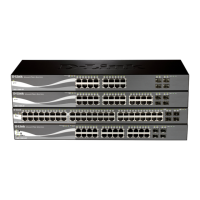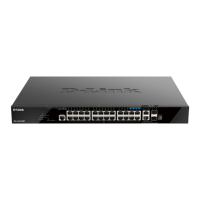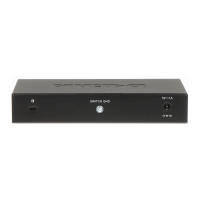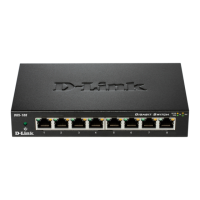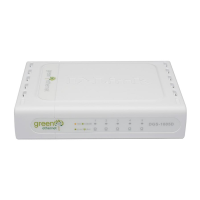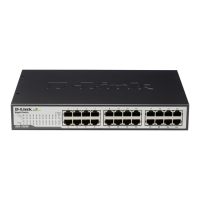DGS-1510 Series Gigabit Ethernet SmartPro Switch Web UI Reference Guide
110
Click the Apply button to accept the changes made.
Link Aggregation
Understanding Port Trunk Groups
Port trunk groups are used to combine a number of ports together to make a single high-bandwidth data
pipeline. The Switch supports up to 32 port trunk groups with 1 to 8 ports in each group.
Figure 5-34 Example of Port Trunk Group
The Switch treats all ports in a trunk group as a single port. Data transmitted to a specific host
(destination address) will always be transmitted over the same port in a trunk group. This allows packets
in a data stream to arrive in the same order they were sent.
Link aggregation allows several ports to be grouped together and to act as a single link. This gives a
bandwidth that is a multiple of a single link's bandwidth.
Link aggregation is most commonly used to link a bandwidth intensive network device or devices, such as
a server, to the backbone of a network.
The Switch allows the creation of up to 32 link aggregation groups, each group consisting of 1 to 8 links
(ports). Each port can only belong to a single link aggregation group.
All of the ports in the group must be members of the same VLAN, and their STP status, static multicast,
traffic control; traffic segmentation and 802.1p default priority configurations must be identical. Port

